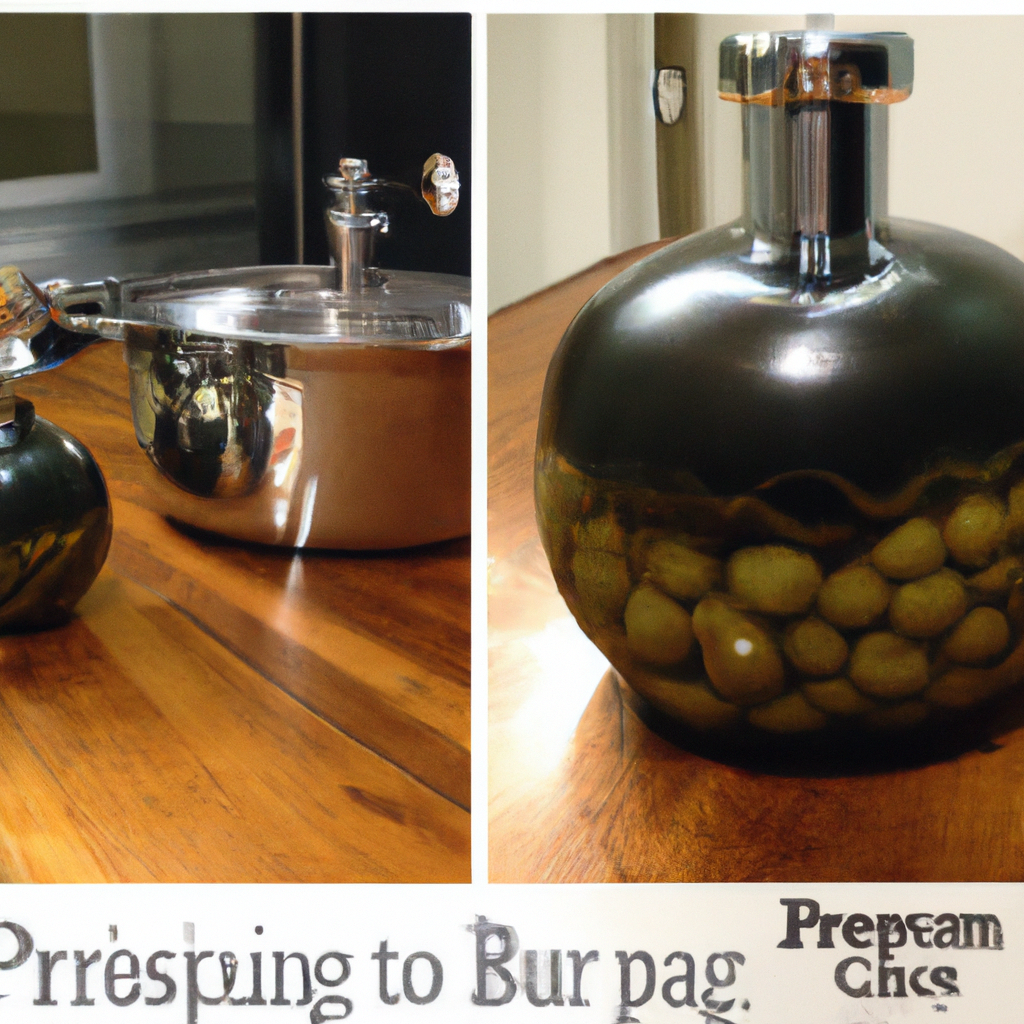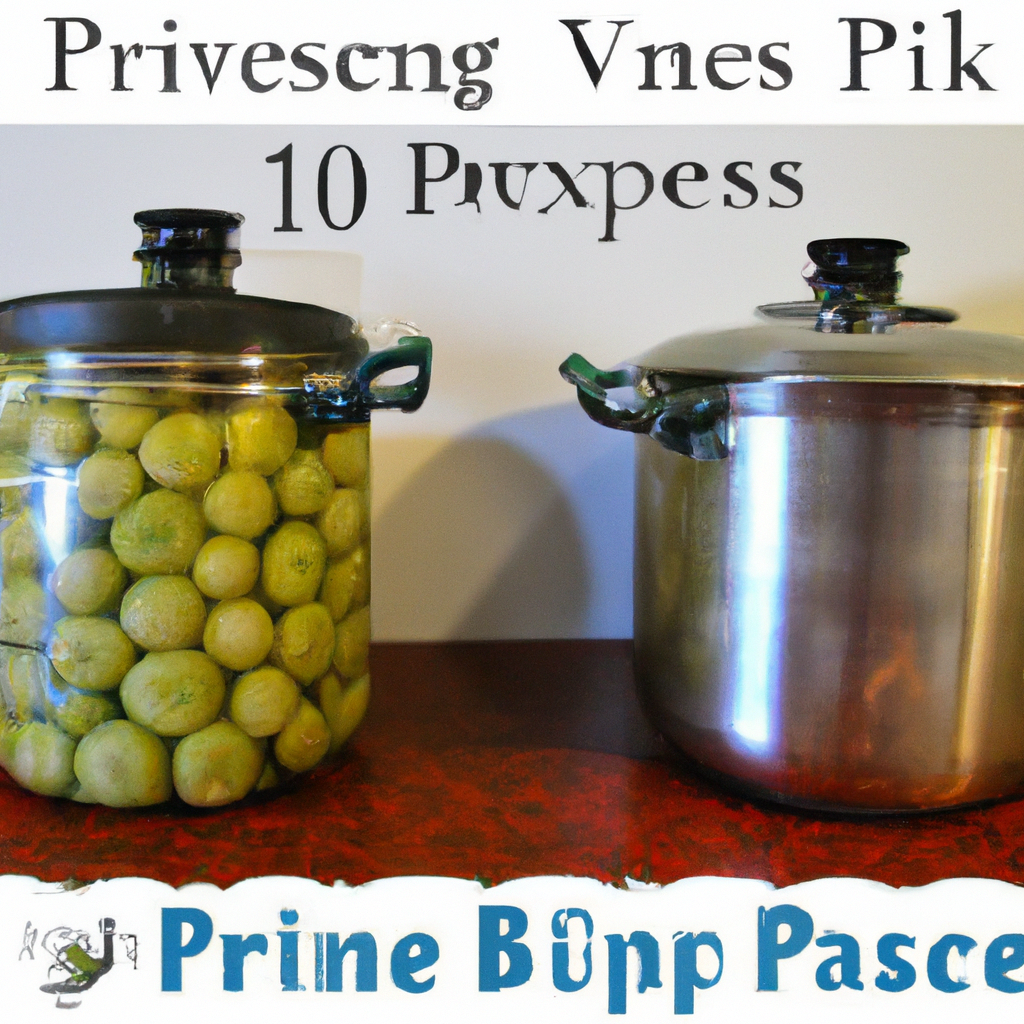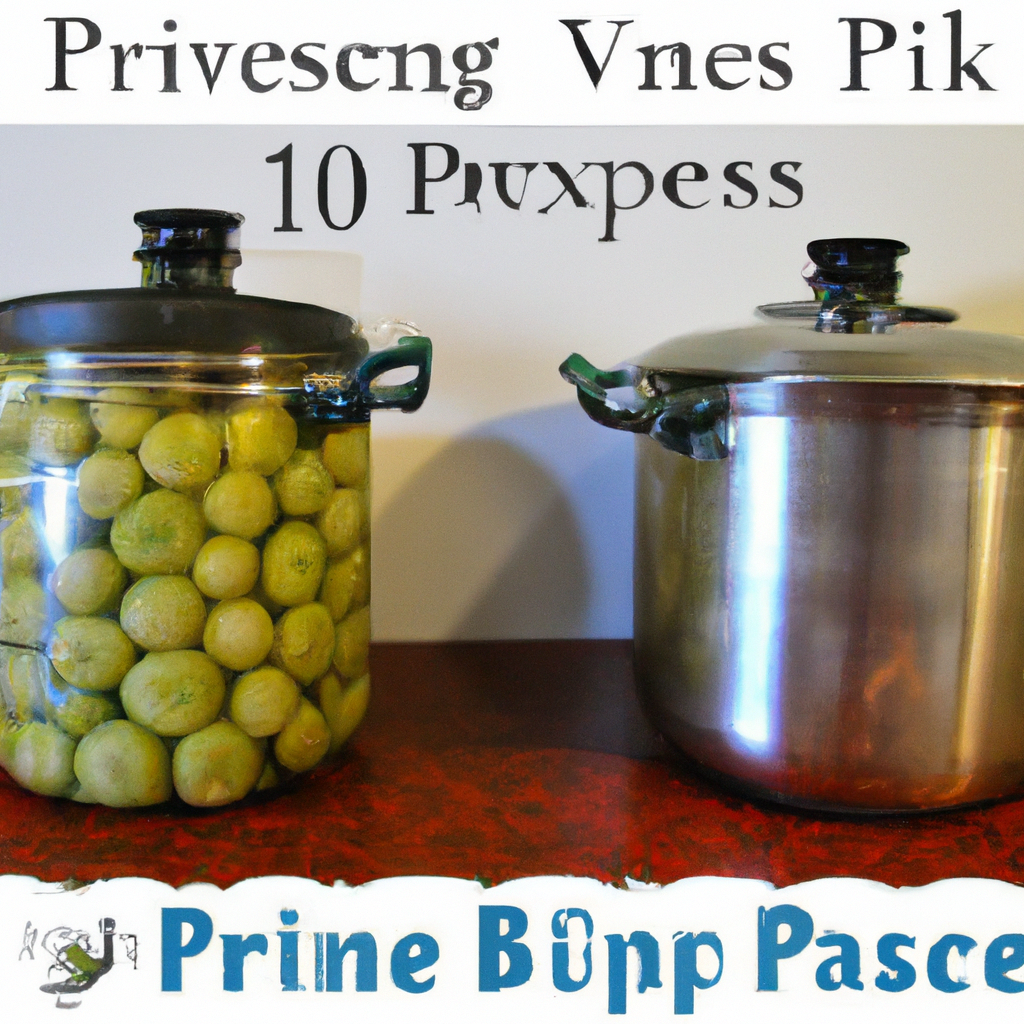Are you an avid home canner, always looking for ways to optimize your canning process? If so, you may have wondered whether a pressure canner needs to be filled with jars in order to work effectively. In this article, we will explore the answer to this common question, providing you with the information you need to make the most out of your canning endeavors. So sit back, relax, and let’s dive into the world of pressure canning!
1. Definition of a Pressure Canner
1.1 Introduction to a Pressure Canner
A pressure canner is a specialized kitchen appliance used for preserving food by canning. It is designed to create airtight seals on jars, creating a safe environment for long-term storage of various foods.
1.2 Purpose of a Pressure Canner
The main purpose of a pressure canner is to create a high-pressure environment that allows for the safe preservation of low-acid foods. This process kills harmful bacteria and ensures that the food remains safe to consume over an extended period of time.
1.3 Types of Pressure Canners
There are two main types of pressure canners: dial gauge canners and weighted gauge canners. Dial gauge canners have a pressure gauge that displays the pressure inside, while weighted gauge canners use a weighted regulator to control the pressure. Both types are effective for pressure canning, but it’s important to choose the right one for your specific needs.
2. The Process of Pressure Canning
2.1 What is Pressure Canning?
Pressure canning is a method of food preservation that involves sealing food in jars and then subjecting it to high-temperature steam under pressure. This process destroys bacteria, yeasts, and molds that may cause spoilage or foodborne illness, ensuring the safety of the preserved food.
2.2 Steps Involved in Pressure Canning
The process of pressure canning typically involves several steps. First, the jars are filled with food and sealed with lids and bands. Then, the filled jars are loaded into the pressure canner. The canner is sealed, and heat is applied to raise the temperature and pressure inside. After the required processing time, the canner is carefully depressurized, and the jars are removed and allowed to cool. It’s essential to follow proper technique and guidelines to ensure the success of the pressure canning process.
2.3 Importance of Proper Technique
Proper technique is crucial when pressure canning to ensure the safety and quality of preserved food. It’s essential to accurately follow processing times and pressure levels specified in tested recipes. Deviating from these recommendations can result in under-processing, leading to potential bacterial growth, or over-processing, which may cause overcooking and loss of texture and flavor. Adhering to proper technique is vital for successful pressure canning.

3. Capacity of a Pressure Canner
3.1 Understanding the Capacity
The capacity of a pressure canner refers to the maximum number of jars it can hold at one time. It is important to consider the capacity when planning your canning recipes and the quantity of food you wish to preserve.
3.2 Determining Jar Size
Jar size plays a role in determining the capacity of a pressure canner. Different jar sizes require different amounts of space, altering the number of jars that can fit in a canner. It’s important to select the appropriate jar size based on the type of food being preserved and the available canner capacity.
3.3 Balancing Fill Levels
When using a pressure canner, it is important to maintain proper fill levels inside the jars. Overfilling can cause liquid to escape during processing, compromising the seal and safety of the food. Underfilling can lead to inadequate heat distribution and potential uneven cooking. Balancing fill levels ensures optimal food preservation and heat distribution, maximizing the efficiency of the pressure canning process.
4. Advantages of Filling a Pressure Canner
4.1 Efficient Use of Energy
Filling a pressure canner to its recommended capacity allows for efficient use of energy. By maximizing the number of jars being processed in a single batch, you reduce the total time and energy required for canning.
4.2 Maximum Load for Processing
A full load in a pressure canner ensures that there is uniform heat distribution across the jars. This maximizes the effectiveness of the canning process, resulting in consistently preserved food.
4.3 Preventing Air Pockets
Filling the canner to its full capacity also reduces the chances of air pockets forming inside the jars during processing. Air pockets can lead to improper heat distribution and may cause spoilage or contamination of the preserved food. Filling the canner with an appropriate number of jars minimizes this risk.

5. Disadvantages of Partially Filled Pressure Canners
5.1 Uneven Heat Distribution
Partially filling a pressure canner can lead to uneven heat distribution during processing. This is because the gaps between jars may not allow for proper circulation of heat, resulting in some jars being undercooked or overcooked.
5.2 Increased Processing Time
With a partially filled canner, the processing time may need to be extended to ensure that all jars reach the required temperature and pressure for safe canning. This extended processing time can be inconvenient and can potentially affect the quality of the preserved food.
5.3 Higher Risk of Overcooking
When a canner is not filled to its recommended capacity, there is a higher risk of overcooking. The excess processing time required for the partially filled canner may lead to the loss of texture, nutrients, and flavor in the preserved food.
6. Extra Precautions with Partially Filled Pressure Canners
6.1 Using Rack Dividers
When pressure canning with a partially filled canner, it is recommended to use rack dividers. These dividers help separate the jars and promote better heat circulation, minimizing the risk of uneven heat distribution within the canner.
6.2 Adjusting Processing Time
When dealing with a partially filled canner, adjustments to the processing time may be necessary. It is crucial to consult reliable canning resources and adjust the processing time accordingly to ensure the jars are adequately processed.
6.3 Monitoring for Overcooking
While pressure canning in a partially filled canner, it’s important to closely monitor the processing time to prevent overcooking. Regularly check the canner pressure and temperature to ensure that the heat is properly distributed within the jars, maintaining the quality of the preserved food.
7. Alternative Methods for Partial Loads
7.1 Water Bath Canning
If you find yourself with a partially filled pressure canner, one alternative method is to consider water bath canning. Water bath canning is suitable for high-acid foods and does not require the same pressure level as pressure canning. This method can be a safe and effective way to process smaller batches of food.
7.2 Freezing Preservation
Another alternative for partially filled canners is to opt for freezing as a method of food preservation. Freezing provides a convenient way to preserve food in smaller quantities and does not require the use of specialized equipment like pressure canners.
7.3 Refrigeration
For certain food items, refrigeration can be a suitable option instead of pressure canning. This is particularly true for items that have a shorter shelf life or are not easily preserved, such as fresh produce or some condiments. Refrigeration can help extend their freshness for a limited period.
8. Recommendations for Pressure Canner Usage
8.1 Filling Guidelines
It is generally recommended to fill a pressure canner to its recommended capacity whenever possible. This ensures optimal heat distribution, more efficient use of energy, and a higher yield of properly preserved food.
8.2 Appropriate Jar Size
When planning your pressure canning, select the appropriate jar size based on the food being preserved and the available canner capacity. This will help achieve a balanced fill level and promote even heat distribution during processing.
8.3 Food-Specific Considerations
Consider the specific requirements of the food you intend to preserve. Some foods, such as meats, may require longer processing times, while others, such as fruits, may have shorter processing times. Following tested recipes and guidelines specific to each food type will ensure the safety and quality of your preserved food.
9. Safety Concerns and Precautions
9.1 Follow Manufacturer Instructions
Always follow the instructions provided by the manufacturer of your pressure canner. Each brand may have specific guidelines and operating procedures that need to be followed to ensure safe and successful pressure canning.
9.2 Proper Seal and Venting
Ensure that jars are properly sealed and that the pressure canner is adequately vented before initiating the canning process. This will prevent the build-up of excessive pressure and provide a safe canning environment.
9.3 Preventing Contamination
Maintain proper hygiene and cleanliness throughout the pressure canning process to prevent contamination of the preserved food. Wash all jars, lids, and bands before use, and handle the food in a clean and sanitized environment to minimize the risk of bacterial growth.
10. Conclusion
10.1 Overall Recommendations
When using a pressure canner, it is generally recommended to aim for a full load of jars to achieve optimal canning results. This allows for maximum heat distribution, efficient energy use, and reduces the risk of overcooking or under-processing.
10.2 Importance of Full Loads
While partially filled pressure canners can still be used with proper precautions, they come with potential disadvantages such as uneven heat distribution, increased processing time, and higher risk of overcooking. It is important to consider alternative preservation methods, such as water bath canning, freezing, or refrigeration, when dealing with smaller batches. By adhering to recommended guidelines, following proper technique, and prioritizing safety precautions, you can enjoy successful and safe pressure canning experiences.
